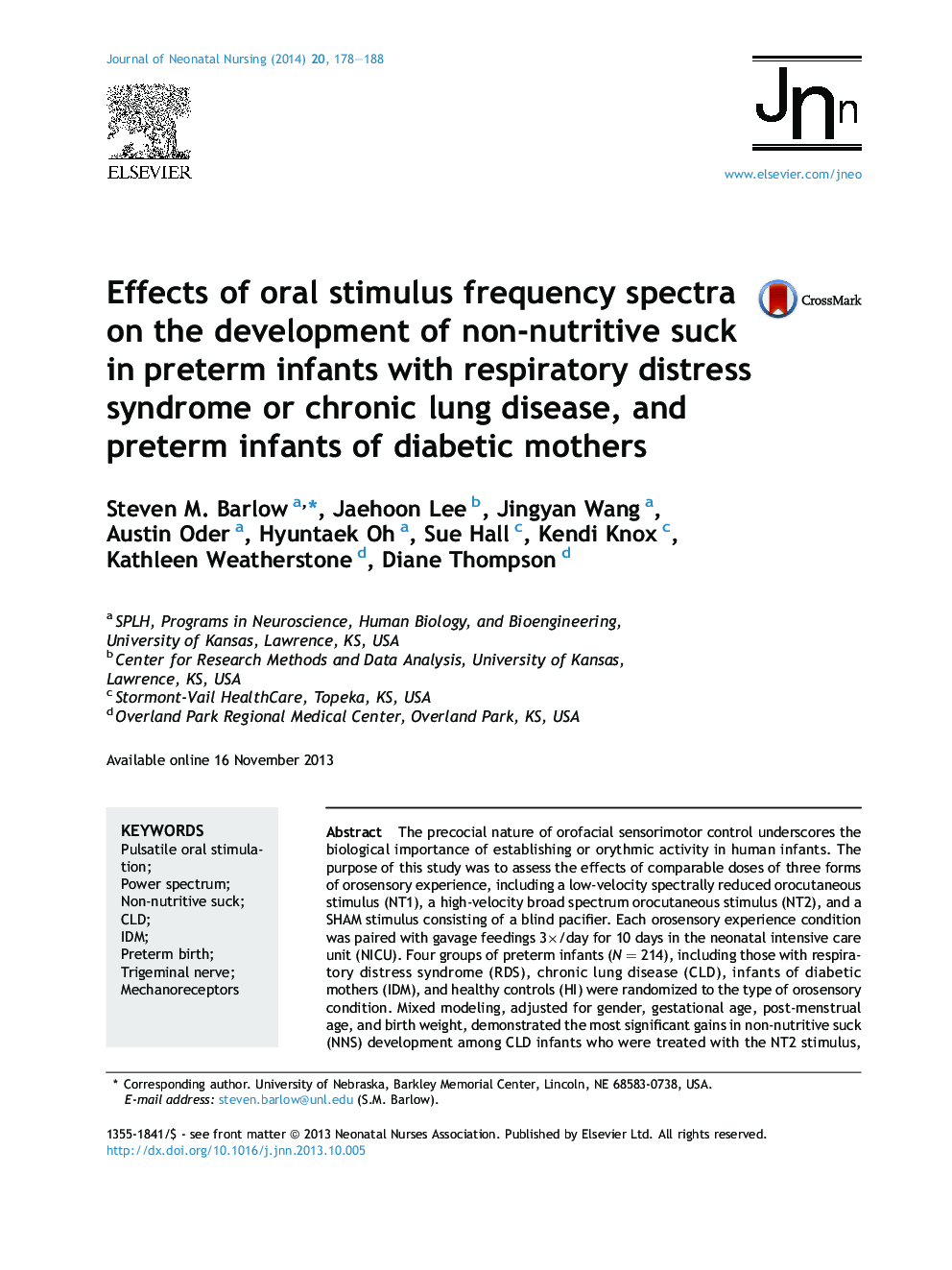| Article ID | Journal | Published Year | Pages | File Type |
|---|---|---|---|---|
| 2631479 | Journal of Neonatal Nursing | 2014 | 11 Pages |
The precocial nature of orofacial sensorimotor control underscores the biological importance of establishing or orythmic activity in human infants. The purpose of this study was to assess the effects of comparable doses of three forms of orosensory experience, including a low-velocity spectrally reduced orocutaneous stimulus (NT1), a high-velocity broad spectrum orocutaneous stimulus (NT2), and a SHAM stimulus consisting of a blind pacifier. Each orosensory experience condition was paired with gavage feedings 3×/day for 10 days in the neonatal intensive care unit (NICU). Four groups of preterm infants (N = 214), including those with respiratory distress syndrome (RDS), chronic lung disease (CLD), infants of diabetic mothers (IDM), and healthy controls (HI) were randomized to the type of orosensory condition. Mixed modeling, adjusted for gender, gestational age, post-menstrual age, and birth weight, demonstrated the most significant gains in non-nutritive suck (NNS) development among CLD infants who were treated with the NT2 stimulus, with smaller gains realized among RDS and IDM infants. The broader spectrum of the NT2 stimulus maps closely to known response properties of mechanoreceptors in lip, tongue, and oral mucosa and is more effective in promoting NNS development among preterm infants with impaired oromotor function compared to the low-velocity, spectrally reduced NT1 orosensory stimulus.
